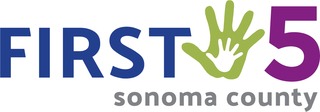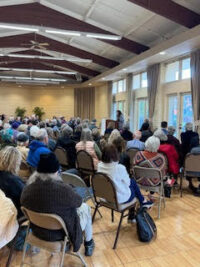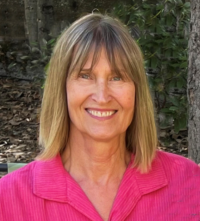A pilot program has begun distributing $500 in monthly guaranteed income to 305 families in Sonoma County – including 10 in the unincorporated area of Sonoma Valley.
Recipients, picked at random from 2,383 eligible applicants, will receive the unrestricted payments for 24 months.
The County’s Pathway to Income Equity pilot will study the impact of unconditional, guaranteed income on reducing poverty and promoting economic mobility for families with young children.
“These payments will help families with young children who are often struggling under the double burden of the high costs of housing and child care – typically the two highest household expenses,” said Supervisor Chris Coursey, chair of the Sonoma County Board of Supervisors. “The information we gain from this pilot program will help shape future efforts to improve the health and welfare of our community.”
The program received 6,450 online applications for 305 spots. After initial screening, 2,383 applicants met eligibility requirements. This group accounts for only 10 percent of the families in Sonoma County with children under age 6 living on household incomes of 185 percent or less of the federal poverty limit, or $42,606 annually for a family of three.
“The number of applications we received speaks to the issue that so many in our community are struggling,” said Angie Dillon-Shore, executive director of First 5 Sonoma County, an independent public agency focused on early childhood development.

First 5 is partnering with the Fund for Guaranteed Income and a coalition of local community organizations to implement the program.
The idea that giving people cash is a disincentive to work is a myth, she said. “ Most of our selected recipients are already working, many working more than one job or more than 40 hours a week just to survive. This extra income will allow them to spend more time with their families, find a better job, or improve their financial wellbeing, resulting in better outcomes for their kids.”
Recipients were randomly selected from geographic pools including the cities of Santa Rosa, Petaluma and Healdsburg, which contributed funding for the pilot.
The pilot program allocated 75 percent of the spots to families living in census tracts with below-average income, health and education levels, as identified in the Portrait of Sonoma 2021 Update. The remaining 25 percent of recipients were randomly selected from a countywide pool.
The distribution breaks down this way: North County: 72 families (Windsor, Healdsburg, Geyserville, Cloverdale); East County: 10 (Sonoma, Glen Ellen, Fetter Hot Springs/Agua Caliente); South County: 95 (Petaluma, Penngrove, Cotati, Rohnert Park); West County: 10 (Forestville, Rio Nido, Sebastopol, unincorporated area); and Central County: 119 (Santa Rosa, unincorporated area).
The pilot program aims to alleviate financial stress felt by families with young children. A 2021 United Ways of California study revealed that 52 percent of Sonoma County households with children under 6 struggled to cover basic needs. Single mothers are most likely to struggle: 67 percent in the county were below the study’s self-sufficiency standard.
Black, Latino, Asian and Native American households comprise 70 percent of the households struggling to meet their basic needs, even though they make up just 33 percent of the total population in Sonoma County.
Research shows conclusively that family economic stability supports readiness for kindergarten, better academic achievement, increased likelihood of completing high school and post-secondary education, better long-term health outcomes, and a well-prepared future workforce.
“The use of Portrait data in this pilot program illuminates the power of grounding ourselves in knowing, understanding, and transforming the injustice of deep racialized inequities in our community,” said Alegría De La Cruz, director of the Sonoma County Office of Equity.
Pathway to Income Equity is one of some 100 guaranteed income programs underway in the United States, including at least 22 in California.
To reach the widest number of potential applicants, First 5 and its partners created culturally responsive and linguistically accessible outreach. The application took an average of 90 seconds to complete, faster than any other guaranteed income pilot in the country. Once the 305 recipients were randomly selected, each applicant had to provide further documentation to prove eligibility.
The $5.4 million effort is funded by the Sonoma County Board of Supervisors, the city councils of Santa Rosa, Petaluma and Healdsburg, as well as Corazón Healdsburg and First 5 Sonoma County. More than 90 percent of the pilot project funding is from the federal American Rescue Plan Act, intended to help those most impacted recover from the COVID-19 pandemic.
First 5 Sonoma County is working with a research evaluation firm that will be conducting focus groups, individual surveys and interviews to gather data on the impact of this unrestricted, monthly income. For more information on the applicant pool and an FAQ, visit www.SonomaPIE.org.








6,450 applications in the County, 305 allocations, aimed at families in Census Tracts with below avg income, health and education…
Sonoma Valley has 2,500+ households with below avg income, demonstrated education disparities, and we get only 5 families to receive the guaranteed income?
I suppose 5 is better than nothing, but to the other 6,150 people, what is this like, losing the lottery?
Though 6,450 applied, the number that met all the criteria was about 2,300. So that’s the better number to figure the lottery odds.